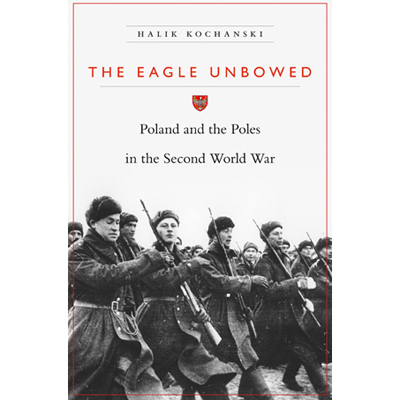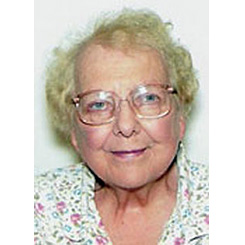 Katyń: Stalin’s Massacre and the Triumph of Truth
Katyń: Stalin’s Massacre and the Triumph of Truth
By Allen Paul
Northern Illinois University Press, 2010, 409 pages
ISBN 978-0-87580-634-1
“Truth, like matter, has proven to be indestructible,” says Allen Paul, about the many ramifications of the massacre of nearly 22,000 Polish officers and prisoners of war in the Katyń forest of Russia in 1940.
The timing couldn’t be better for an updated edition of this important book, in the aftermath of the tragic April 10 plane crash in Smolensk, Russia in which Polish President Lech Kaczynski, his wife and 94 other members of the nation’s political and military elite who were headed to a 70th anniversary commemorative ceremony of the Katyń Forest massacre, were killed. Its importance was underscored and discussed at a conference in May held at the Library of Congress attended by several hundred historians, diplomats and politicians, and others.
This edition, originally published nearly twenty years ago, includes additional material newly available from Soviet archives.
The importance of the Katyń crime is complex and far-reaching. Initially, the Soviets denied knowing what had happened to the missing Poles, but in 1943 – three years after the massacre – some of the bodies were uncovered by wolves during the German occupation of the area. There was conflicting information about whether the Nazis or the Soviets were guilty of the murders, which led some to the presumption that the West’s enemy, the Germans, were to blame.
Posturing self-righteously, Stalin used the controversy over Katyń as a pretext to sever relations with the Polish government-in-exile; Churchill and Roosevelt acquiesced to Stalin’s wishes, turning a blind eye to the inconvenient truth of the alliance. This led to the domination of the Polish state by the Soviets for over fifty years.
It is even possible to assert – though Paul doesn’t directly do so – that the conflicts surrounding the incident represented the start of the Cold War.
Additionally, the British and Americans played a significant role in covering up the truth about the crimes. Paul shows that some in those governments realized the moral dilemma of betraying their ally, Poland, but felt that compromise was necessary because the USSR was an ally during the war. Later, the need for Stalin’s support for the UN and fear of confrontation trumped the cause of Poland’s independence.
What was particularly appalling in America’s role in the cover-up, which ranged from the FCC’s silencing of war-time Polish-American radio stations in Detroit and Buffalo who broadcast that the Soviets were guilty of the crimes to failing to release the results of an early 1950s Congressional investigation that proved beyond the shadow of a doubt that the Soviets had murdered the Poles.
Shockingly, “more research has focused on Katyń than on any of Stalin’s long list of terrible crimes,” Paul writes. Yet, no one has ever been punished for the massacres and no reparations have been paid to the families of the victims.
The massacres were used as a propaganda ploy by both the Nazis and the Soviets. Joseph Goebbels is quoted as saying “we are exploiting it in every manner possible” by asserting that the Soviets had killed the Poles. He went on to say that “The most important theme of the international discussion is naturally the break between Moscow and the Polish Émigré Government… All enemy broadcasts and newspapers agree that this break represents a 100 percent victory for German propaganda and for me personally.”
The Soviets asserted that the Nazis were guilty, even sponsoring a commission to investigate the crimes. They tried to demonstrate that the murders took place during the German occupation of the Katyń region. Ironically, Lavrenty Beria, head of the NKVD (forerunner to the KGB) later admitted that murdering the Polish officers was a “blunder,” since they could have been used to help defeat the Nazis.
Allen Paul’s stated goal in writing this book was to humanize the narrative by interweaving the stories of three families who lost loved ones in the Katyń forest. He conducted extensive interviews with surviving family members and was able to gain access to the diary of one of the victims.
The tales of the many who helped to save family members of the Katyń victims include people from the Soviet Union, Iran, Africa and Germany – which lends an air of hope to the book.
Paul (who is not of Polish origin) originally became interested in Katyń after hearing about the massacre in Italy, initially believing it to be “the last great unsolved crime of World War II.” Significantly, Paul was the only American invited to the April 7 Katyń commemorative ceremony with Polish Prime Minister Donald Tusk and his Russian counterpart, Vladimir Putin.
This book is well documented, with extensive original-source research in evidence. However, it suffers in a few places where similar information is re-told later, and from occasional abrupt shifts in scene and character. Minor quibbles considering that over a century of history is covered comprehensively, with both the context and the details expertly conveyed.
The plane crash of Kaczynski’s delegation to Katyń (in an old Soviet jet) led to conspiracy theories, some seeing it as a second Katyń, another attempt to decimate the Polish elite by Russia. It also echoed General Sikorski’s mysterious death in a plane in 1943, a major factor which allowed a puppet government to be established in Poland after the war.
However, the Polish government and military has carried on admirably due to the strength and resilience of a nation that has had more than its share of challenges. Before the crash, Putin rather formally acknowledged the truth about what happened at Katyń. But after the crash, according to Zbigniew Brzezinski, the Russian government’s handling of the incident showed a change in attitude, more humane and compassionate. Thus, in a curious way, this time, Katyń is proving to be a catalyst for change in relations between Russia and Poland and the impetus for a reconciliation that is long overdue.
CR



